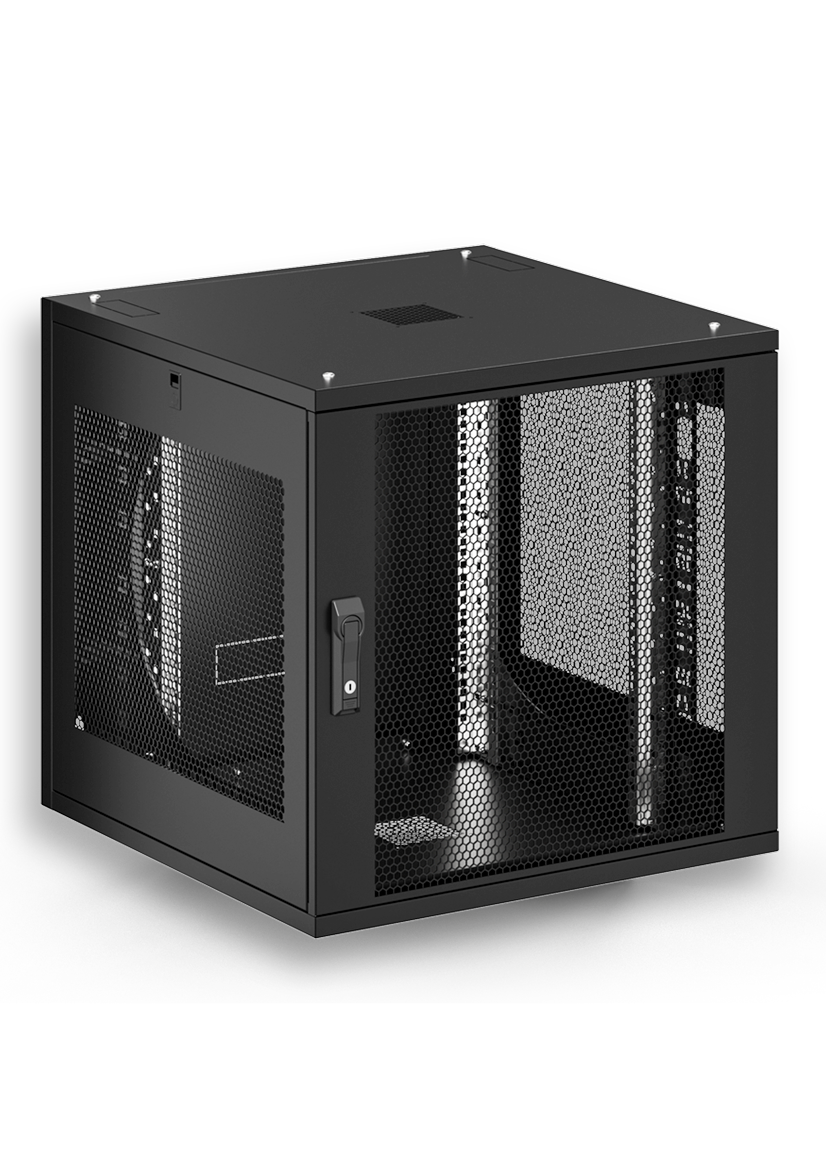THE FUTURE
NETWORK RACKs
Wall Mount Network Enclosure — Empowering a Resilient Network Infrastructure
INTRODUCTION
Company “Y,” a leader in network systems installation and maintenance for small and medium-sized businesses, undertook a project to upgrade the network infrastructure for one of its clients, a small manufacturing firm. The main objective was to create a space-efficient, scalable, and reliable network infrastructure. Dubbed “Connection,” this project centered around using a wall mount network enclosure to organize and protect essential networking equipment. The selected cabinet met stringent requirements for durability, adaptability, and straightforward installation.
OPERATING CONDITIONS
The client’s office had limited space for IT infrastructure, making a wall mount network enclosure the ideal choice. By mounting the enclosure on the wall, the design team could conserve floor space while maintaining accessibility to critical equipment.
Given the multiple active devices planned for the enclosure, such as an uninterruptible power supply (UPS), server, and switch, temperature control was essential to prevent overheating.
Operating Conditions:
– Space Efficiency: The network enclosure had to be wall-mounted to save space.
– Ease of Access: Quick access to equipment for maintenance and upgrades.
– Thermal Management: Proper airflow to manage heat from high-use equipment.
– Security: Protection against unauthorized access and physical damage.
WALL MOUNT NETWORK ENCLOSURE SELECTION CRITERIA
Selecting the right wall mount network enclosure was crucial for achieving the project’s goals. The chosen enclosure needed to support compact design, cable management, cooling, and security features.
1. Compact, Wall-Mountable Design: The PROTON-X series cabinet, featuring a wall-mount design, was ideal for the client’s limited office space. Its placement minimized workspace interference while ensuring convenient access to equipment.
2. Flexible Configuration and Scalability: A 12U cabinet with a depth of 650 mm was selected, offering compactness suitable for current needs and future scalability to support additional equipment.
3. Cable Management: Efficient cable management was a priority. The enclosure’s design featured cable entries at the rear roof, enabling organized cable routing, improving ventilation, and reducing hotspots within the enclosure.
4. Security and Protection: The cabinet included locking mechanisms on the front doors and removable side panels, providing essential security in open office spaces.
5. Cooling and Ventilation: Equipped with perforated side panels, the enclosure allowed for natural ventilation, with optional fan installation to enhance temperature regulation. This design minimized the risk of overheating, even during intensive use.
EQUIPMENT COMPATIBILITY
The wall mount network enclosure needed to accommodate various networking devices, such as servers, switches, and a UPS. Its compatibility with standard 19-inch equipment made it versatile for small and medium-sized network setups. The modular structure allowed for adding future servers and storage systems, facilitating a seamless expansion without replacing the enclosure.
PROJECT IMPLEMENTATION PHASES
1. Preparation Phase:
– The design team analyzed the client’s current requirements, determined the equipment setup, and planned for potential scalability.
– Decisions on equipment layout and enclosure placement optimized access and maintenance.
2. Installation and Setup:
– Mounting the Enclosure: The team mounted the wall mount network enclosure using anchor bolts, ensuring stability even under full equipment load.
– Cable Organization: Cables were routed through the enclosure’s designated cable entries and managed with organizers, promoting airflow and preventing overheating.
– PDU and Equipment Installation: Power Distribution Units (PDUs) were installed, simplifying device connectivity and maintaining power distribution efficiency.
3. Final Phase:
– Equipment Setup and Testing: All devices were connected, configured, and tested for stability and readiness for future upgrades.
– Temperature Monitoring: Operating temperature was closely monitored to confirm the enclosure’s effectiveness in maintaining stable conditions.
– System Testing: The team conducted performance checks to validate the network’s robustness and scalability.
The “Connection” project proved that a strategic selection of a wall mount network enclosure like the PROTON-X can create a reliable, adaptable network infrastructure. This setup offers the scalability needed to support Company “Y” as it continues to grow in the market, making it a highly efficient solution for small to medium-sized business environments.
The primary goal was to fit all network equipment into a wall-mount cabinet to save office space in a business center.
It was essential to allow for future expansion as the company grows.
Protect network equipment from unauthorized access and electrostatic damage.
The cabinet had to provide easy access to equipment and cables, making installation and future maintenance as straightforward and quick as possible.
The Wall Mount Network Enclosure freed up significant office space while maintaining easy access to the equipment for maintenance.
The cabinet allowed for the installation of additional devices in the future, greatly enhancing network flexibility and scalability as the company grows.
The locks and grounding ensured equipment protection from external threats and electrical risks. Cable management reduced overheating risk and improved airflow.
The cabinet’s perforated panels provided natural ventilation for the equipment, reducing the need for active cooling systems and saving energy costs.


